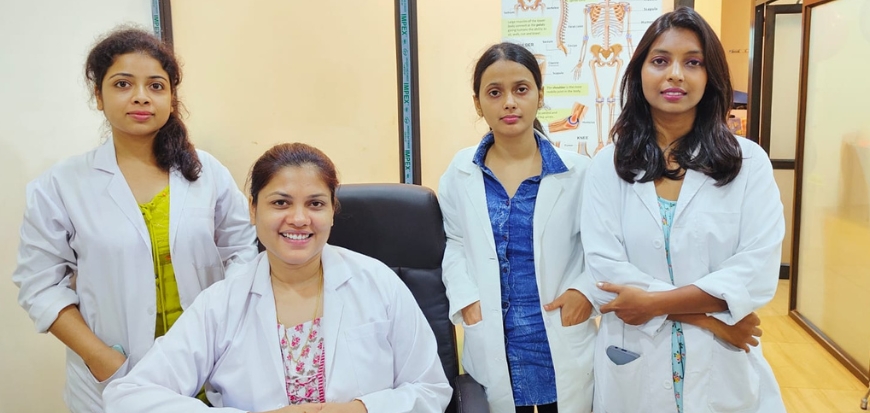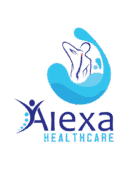
MUSCULAR DYSTROPHY:
Muscular dystrophies are a group of muscle diseases caused by mutations in a person’s genes. Over time, muscle weakness decreases mobility, making everyday tasks difficult. There are many kinds of muscular dystrophy, each affecting specific muscle groups, with signs and symptoms appearing at different ages, and varying in severity. Muscular dystrophy can run in families, or a person can be the first in their family to have muscular dystrophy.
There are several types of muscular dystrophy, with the most common forms including:
- Duchenne Muscular Dystrophy (DMD): DMD is the most prevalent and severe type of muscular dystrophy. It primarily affects boys and usually becomes evident in early childhood. Children with DMD experience difficulty walking, climbing stairs, and performing other motor activities. The disease progressively weakens the muscles, leading to mobility issues and complications with the heart and respiratory system.
- Becker Muscular Dystrophy (BMD): BMD is a milder form of muscular dystrophy, but it still causes muscle weakness and affects mainly boys. The symptoms are similar to DMD but generally appear later and progress slower.
- Myotonic Dystrophy: This form affects both men and women and is characterized by muscle stiffness and prolonged muscle contractions (myotonia). It can also affect other systems of the body, leading to symptoms such as cataracts, heart abnormalities, and cognitive issues.
- Facioscapulohumeral Muscular Dystrophy (FSHD): FSHD usually starts with weakness and wasting in the face, shoulder, and upper arm muscles. It may later affect muscles in other parts of the body.
- Limb-girdle Muscular Dystrophy (LGMD): This group of disorders affects the muscles of the shoulders and hips, leading to weakness and progressive difficulty with walking and other physical activities.
SYMPTOMS:
- Muscle Weakness: Progressive muscle weakness is the hallmark symptom of MD. It usually begins in specific muscle groups and gradually affects other muscles over time. The weakness is often more pronounced in the muscles closest to the center of the body, such as the shoulders and hips.
- Difficulty Walking: Children with muscular dystrophy may have difficulty walking or experience a waddling gait. They may also struggle to get up from a sitting or lying position.
- Frequent Falls: Weak muscles can lead to an increased risk of falling, especially when trying to walk, climb stairs, or perform activities that require muscle strength and coordination.
- Breathing Difficulties: Muscular dystrophy can affect the muscles responsible for breathing, leading to respiratory problems and an increased risk of respiratory infections.
TREATMENT FOR MUSCULAR DYSTROPHY:
- Range of Motion Exercises: Gentle range of motion exercises help maintain joint flexibility and prevent contractures (permanent shortening of muscles or tendons) that can occur due to muscle weakness and inactivity.
- Muscle Strengthening Exercises: Targeted exercises are designed to strengthen the remaining muscles and improve functional abilities. These exercises may include resistance training, isometric exercises, and low-impact weight-bearing exercises.
- Stretching: Regular stretching helps prevent muscle tightness, maintain joint flexibility, and reduce the risk of contractures.
- Balance and Coordination Training: Exercises to improve balance and coordination are essential for enhancing mobility and reducing the risk of fall

PHYSIOTHERAPY
Physiotherapy, also known as physical therapy in some regions, is a healthcare profession and treatment approach focused on improving and restoring physical function, mobility, and overall well-being. Physiotherapists, or physical therapists, are trained healthcare professionals who use a variety of techniques and interventions to help individuals recover from injuries, manage chronic conditions, prevent future physical problems, and enhance their overall quality of life.
BENEFITS
Pain Management: Physiotherapy can effectively reduce or eliminate pain through techniques such as manual therapy, modalities like heat or cold therapy, and therapeutic exercises. This is particularly valuable for individuals with chronic pain conditions or acute injuries.
Improved Mobility and Function: Physiotherapists work to restore and enhance a person’s physical function, mobility, and range of motion. This can help individuals regain independence in their daily activities
Improved Balance and Fall Prevention: Physiotherapists work on balance and coordination exercises to reduce the risk of falls, especially in older adults, and improve overall stability.

AQUA THERAPY
Aqua therapy, also known as aquatic therapy or hydrotherapy, is a therapeutic approach that involves using water-based exercises and activities to achieve various health and rehabilitation goals. It takes advantage of the unique properties of water, such as buoyancy, hydrostatic pressure, and resistance, to provide a safe and effective environment for patients to improve their physical and mental well-being.
BENEFITS
- Buoyancy and Reduced Weight-Bearing: Water’s buoyancy reduces the effects of gravity on the body, making it easier for individuals with weakened muscles to move and exercise without putting excessive strain on their joints. This buoyancy helps support the body’s weight, allowing for more comfortable movements and reduced risk of falls.
- Muscle Relaxation: The warmth of the water in hydrotherapy pools can help relax muscles, alleviate tension, and reduce pain. For individuals with GBS, who may experience muscle cramps and discomfort, hydrotherapy can provide a soothing environment for relaxation and relief.
- Joint Mobility and Flexibility: The water’s buoyancy and supportive properties enable gentle joint movements that might be challenging on land. Hydrotherapy promotes joint flexibility and range of motion, helping to prevent stiffness
CONCLUSION
Aqua Therapy plays a significant role in the recovery and management of muscular dystrophy by offering a safe and effective environment for exercise and rehabilitation. While it’s important to note that muscular dystrophy is a progressive genetic condition without a cure, aqua therapy can help improve quality of life, and maintain functional abilities.
TEAM OF PHYSIOTHERAPISTS

A team of Physiotherapists in Alexa Clinic under the guidance of Dr. Shipra Kumari, Chief Physiotherapist and certified Aquatic Therapist (IATF Switzerland).
Alexa Clinic is a super-specialty physiotherapy and aquatic therapy clinic first of its kind opened in Kolkata in the year 2019. With many accolades and recognition Alexa Clinic has treated more than 10,000 patients suffering from various illnesses.
https://www.facebook.com/alexaactiveaging
https://www.instagram.com/alexaactiveaging/
https://www.linkedin.com/company/18745272/admin/
It’s easy to book an appointment with Dr. Shipra Kumari over a call at 8777694040 or visit the website of Alexa Healthcare.
#Physiotherapy #PhysicalTherapy #PTRehab #MovementMatters #TherapyWorks #PTforLife #PTHelp #PTStrong #Rehabilitation #PhysicalHealth #PTGoals #HealingHands #MoveBetter #StayActive #RecoveryJourney #HealthyBody #PainFreeLiving #PTWellness #ActiveLife #GetMoving#MuscularDystrophyAwareness #MDWarrior #StrengthOverMuscle #FightMuscularDystrophy #MuscleStrong #DystrophyWarrior #LivingWithMD #MuscleHope #MDAwareness #EndMuscularDystrophy #MDSupport #MuscleWarrior Bottom of Form
